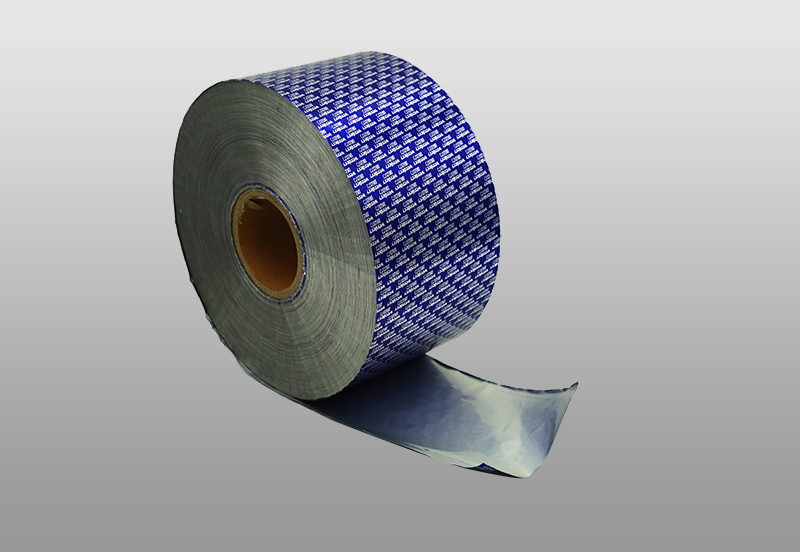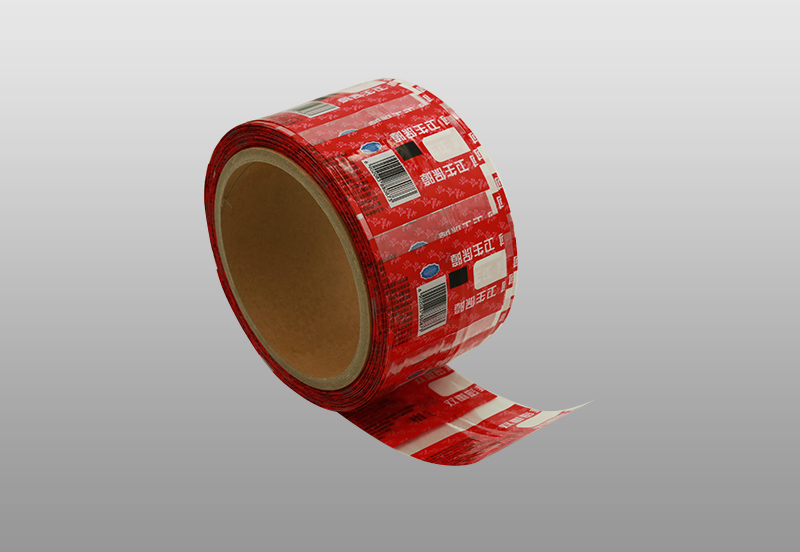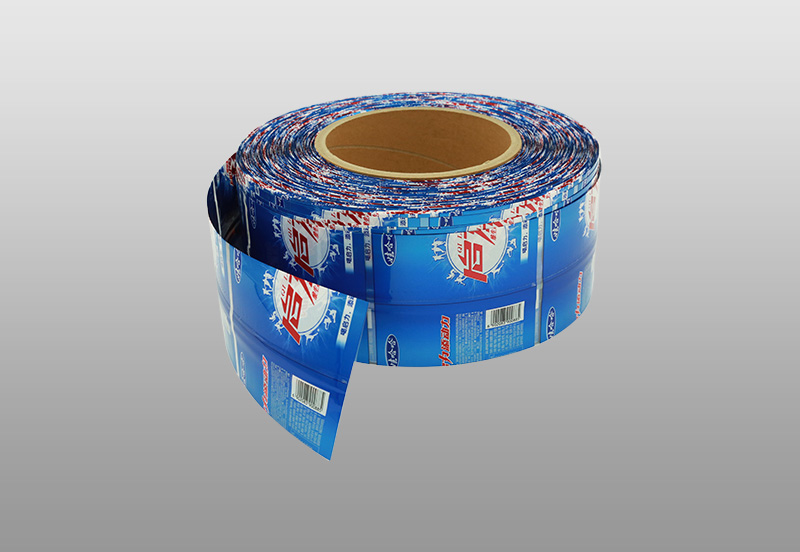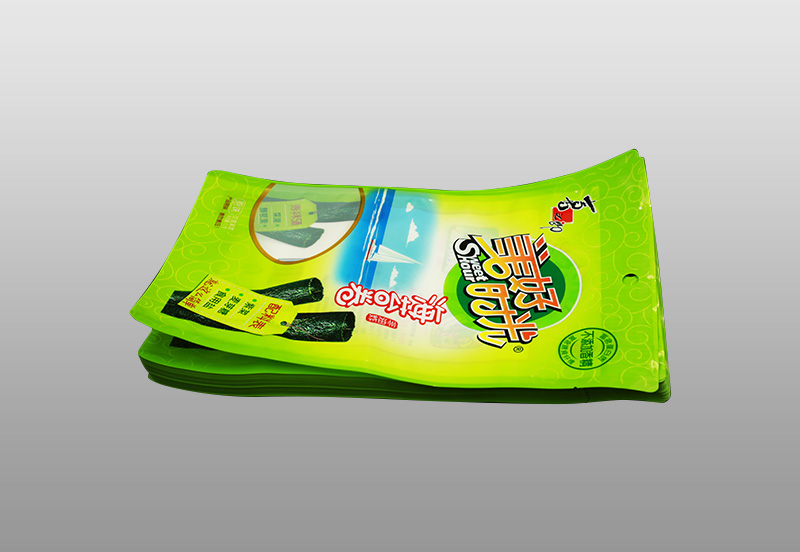PVA coated high barrier film
PVA coated high-barrier film is made by coating PVA with nano-inorganic substance on polyethylene film and then printing and compounding. Without greatly increasing the cost, its barrier performance is not only significantly better than the five-layer EVOH The film is squeezed, and the packaging cost is also greatly reduced. This not only ensures all the quality requirements for aseptic packaging of the packaged material, but also greatly reduces the cost of aseptic packaging for food processing enterprises. It can be used for packaging beverages, juices, milk, Soy sauce vinegar and so on.
Biaxially oriented polypropylene film (BOPP)
The biaxially oriented polypropylene film is made by co-extruding polypropylene particles to form a sheet, and then stretching them in both vertical and horizontal directions. Due to the orientation of the stretched molecules, this film has good physical stability, mechanical strength, air tightness, high transparency and gloss, toughness and wear resistance. It is the most widely used printing film, and the thickness is generally 20-40 μ m, the most widely used is 20 μ m. The main disadvantage of biaxially oriented polypropylene film is poor heat sealability, so it is generally used as the outer film of composite film. For example, the moisture resistance, transparency, strength, stiffness and printability of the composite film are ideal after being composited with polyethylene film. It is suitable for Contain dry food. Because the surface of the biaxially oriented polypropylene film is non-polar, the crystallinity is high, and the surface free energy is low. Therefore, its printing performance is poor, and its adhesion to ink and adhesive is poor. It needs to be surfaced before printing and lamination. deal with.
Low density polyethylene film (LDPE)
Low-density polyethylene films are generally made by blow molding and casting processes. The thickness of cast polyethylene film is uniform, but due to its higher price and lower cost, it is the most widely used. Low-density polyethylene film is a semi-transparent, shiny, and soft film with excellent chemical stability, heat sealability, water resistance and moisture resistance, freezing resistance, and boiling. Its main disadvantage is that it has poor oxygen barrier properties. It is often used as the inner film of composite flexible packaging materials. It is also the most widely used and most used plastic packaging film, accounting for more than 40% of the consumption of plastic packaging film.
Since the polyethylene molecule does not contain polar groups, has high crystallinity and low surface free energy, the film has poor printing performance and poor adhesion to inks and adhesives, so it is necessary before printing and lamination. Perform surface treatment.
Polyester film (PET)
Polyester film is a film material made of polyethylene terephthalate as a raw material, made into thick sheets by extrusion, and then biaxially stretched. It is a colorless, transparent, glossy film with excellent mechanical properties, high rigidity, hardness and toughness, puncture resistance, friction resistance, high temperature and low temperature resistance, chemical resistance, oil resistance, air tightness and fragrance retention Good, it is one of the commonly used barrier composite film substrates. However, the price of polyester film is relatively high, and the thickness is generally 12 μm. It is commonly used as the outer layer material of retort packaging and has better printability.
Nylon film (PA)
Nylon film is a very tough film with good transparency, good gloss, high tensile strength, high tensile strength, and good heat resistance, cold resistance, oil resistance and organic solvent resistance. Excellent abrasion resistance, puncture resistance, and relatively soft, excellent oxygen barrier, but poor barrier to water vapor, greater moisture absorption and moisture permeability, poor heat sealability, suitable for packaging hard items, such as greasy Sexual foods, meat products, fried foods, vacuum packaged foods, steamed foods, etc.
Cast polypropylene film (CPP)
Cast polypropylene film is a polypropylene film produced by a casting process. It can be divided into ordinary CPP and cooking grade CPP. It has excellent transparency, uniform thickness, and uniform vertical and horizontal performance. Generally used as the inner layer material of the composite film.
The thickness of ordinary CPP film is generally between 25-50μm. After being compounded with OPP, the transparency is good, the surface is bright, and the hand feels firm. This material is used in general gift packaging bags. This film also has good heat sealability. The thickness of cooking-grade CPP film is generally between 60 and 80 μm. It can withstand high-temperature cooking at 121°C for 30 min. It has good oil resistance, air tightness, and high heat seal strength. The inner layer of general meat packaging is uniform. Use cooking grade CPP film.
Aluminized film
The most commonly used aluminized films are mainly polyester aluminized film (VMPET) and CPP aluminized film (VMCPP). Aluminized film has both the characteristics of plastic film and the characteristics of metal. The function of aluminum plating on the film surface is to shield light and prevent ultraviolet radiation, which not only prolongs the shelf life of the contents, but also improves the brightness of the film. It replaces the aluminum foil to a certain extent. It also has low price, beautiful appearance and better barrier performance. , Aluminized film is widely used in composite packaging.

 English
English Español
Español русский
русский 简体中文
简体中文






